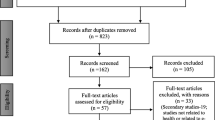Abstract
The cost and effectiveness of eight approaches to reducing barriers to cataract surgery were evaluated in a rural area of South India during 1987–1989. The approaches were based on four intervention alternativesaphakic motivator (AM), basic eye health worker (BW), screening van (SV), and mass media (MM). Each intervention was offered at two levels of economic incentive: partial, which provides free surgery and hospital stay, and full, which also provides transport from the recipient's village to the hospital and free food during the hospital stay. Evaluations took place in a probability selection of 90 villages, including ten control villages not subjected to either of the interventions. Only costs unique to patients from the intervention villages were considered: Health education and screening costs were included, surgery costs were not. Percentage reductions in the cataract blind backlog and increases in surgical coverage were used as effectiveness measures. Analyses suggest that the SV and AM interventions, both with full economic incentive, offer the greatest advantage. The AM intervention is the more effective of the two, but also the more costly.
Similar content being viewed by others
References
Kupfer C. A decade of progress in the prevention of blindness. In: Kupfer C ed. World Blindness and Its Prevention, Vol 3. Oxford: Oxford University Press, 1988: 8–14.
Ellwein LB, Kupfer C. Operations research in cataract blindness prevention. In: Kupfer C ed. World Blindness and Its Prevention, Vol 3. Oxford: Oxford University Press, 1988: 58–69.
Helen Keller International. To Restore Sight: The Global Conquest of Cataract Blindness. New York: Helen Keller International, 1986.
Kara-Jose N, Contreras F, Campos MA, Delgado AM, Mowrey RL, Ellwein LB. Screening and surgical intervention results from cataract-free-zone projects in Campinas, Brazil and Chimbote, Peru. International Ophthalmology 1990; 14: 155–164.
Venkataswamy G, Brilliant GE. Social and economic barriers to cataract surgery in rural South India: a preliminary report. Visual Impairment and Blindness 1981: 405-408.
Venkataswamy G, Lepkowski JM, Brilliant GE et al. Strategies for the reduction of barriers to cataract surgery. (Submitted for publication).
Author information
Authors and Affiliations
Consortia
Rights and permissions
About this article
Cite this article
Ellwein, L.B., Lepkowski, J.M., Thulasiraj, R.D. et al. The cost effectiveness of strategies to reduce barriers to cataract surgery. Int Ophthalmol 15, 175–183 (1991). https://doi.org/10.1007/BF00153924
Issue Date:
DOI: https://doi.org/10.1007/BF00153924




